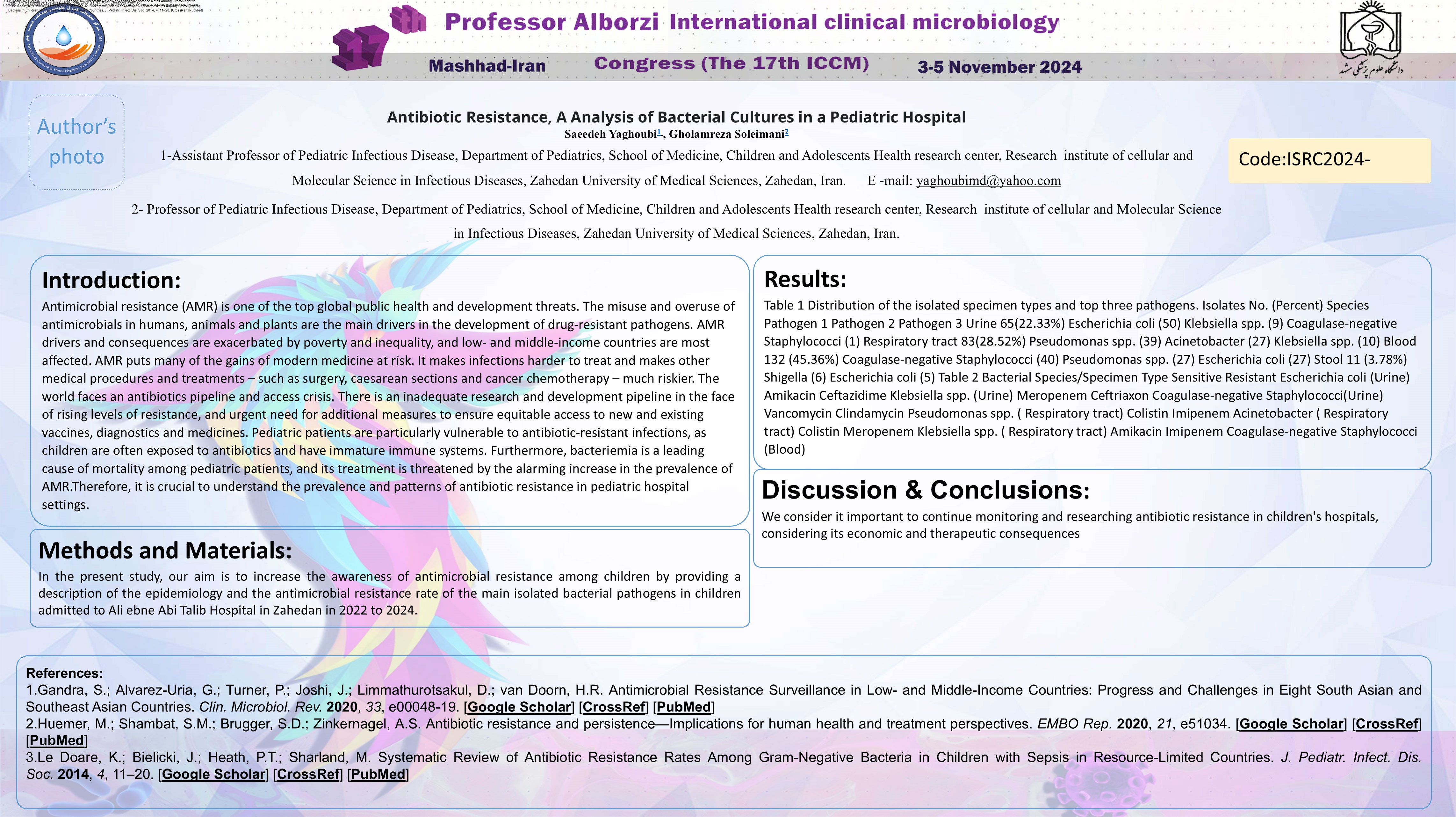مقاومت آنتی بیوتیکی، تجزیه و تحلیل کشت های باکتریایی در یک بیمارستان کودکان
کد: G-1018
نویسندگان: Saeedeh Yaghoubi ℗, Gholamreza Soleimani ©
زمان بندی: زمان بندی نشده!
دانلود: دانلود پوستر
خلاصه مقاله:
خلاصه مقاله
Antimicrobial resistance (AMR) is one of the top global public health and development threats. The misuse and overuse of antimicrobials in humans, animals and plants are the main drivers in the development of drug-resistant pathogens. AMR drivers and consequences are exacerbated by poverty and inequality, and low- and middle-income countries are most affected. AMR puts many of the gains of modern medicine at risk. It makes infections harder to treat and makes other medical procedures and treatments – such as surgery, caesarean sections and cancer chemotherapy – much riskier. The world faces an antibiotics pipeline and access crisis. There is an inadequate research and development pipeline in the face of rising levels of resistance, and urgent need for additional measures to ensure equitable access to new and existing vaccines, diagnostics and medicines. Pediatric patients are particularly vulnerable to antibiotic-resistant infections, as children are often exposed to antibiotics and have immature immune systems. Furthermore, bacteriemia is a leading cause of mortality among pediatric patients, and its treatment is threatened by the alarming increase in the prevalence of AMR.Therefore, it is crucial to understand the prevalence and patterns of antibiotic resistance in pediatric hospital settings. In the present study, our aim is to increase the awareness of antimicrobial resistance among children by providing a description of the epidemiology and the antimicrobial resistance rate of the main isolated bacterial pathogens in children admitted to Ali ebne Abi Talib Hospital in Zahedan in 2022 to 2024. Table 1 Distribution of the isolated specimen types and top three pathogens. Isolates No. (Percent) Species Pathogen 1 Pathogen 2 Pathogen 3 Urine 65(22.33%) Escherichia coli (50) Klebsiella spp. (9) Coagulase-negative Staphylococci (1) Respiratory tract 83(28.52%) Pseudomonas spp. (39) Acinetobacter (27) Klebsiella spp. (10) Blood 132 (45.36%) Coagulase-negative Staphylococci (40) Pseudomonas spp. (27) Escherichia coli (27) Stool 11 (3.78%) Shigella (6) Escherichia coli (5) Table 2 Bacterial Species/Specimen Type Sensitive Resistant Escherichia coli (Urine) Amikacin Ceftazidime Klebsiella spp. (Urine) Meropenem Ceftriaxon Coagulase-negative Staphylococci(Urine) Vancomycin Clindamycin Pseudomonas spp. ( Respiratory tract) Colistin Imipenem Acinetobacter ( Respiratory tract) Colistin Meropenem Klebsiella spp. ( Respiratory tract) Amikacin Imipenem Coagulase-negative Staphylococci (Blood)
کلمات کلیدی
Antibiotic Resistance, Bacterial Cultures , Pediatric
